INSTITUT SUPERIEUR D'ANTHROPOLOGIE
INSTITUTE OF ANTHROPOLOGY
ONLINE COURSES / COURS A DISTANCE
FALL TERM : OCTOBER 2015
REGISTER NOW
PEROU – 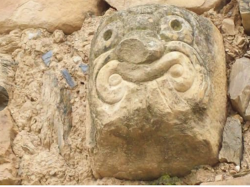 Chaupimarca - Two stone gargoyles associated with the pre-Hispanic Chavin culture have been discovered on a the town wall of Chaupimarca, in Pasco. The two heads stand about 40 centimetres high and weight an estimated 100 kilograms apiece. El Comercio reports that the artefacts were discovered by local environmentalist Rodolfo Rojas Villanueva, with the organization Patria Verde sin Fronteras–PVF. Mr Rojas Villanueva said one of the heads was found with a nail embedded in it. “This finding is very important; it suggests the Chavin culture may originated in this part of Peru,” said Mr Rojas Villanueva. Mr Rojas Villanueva has asked the Ministry of Culture to prioritize research to test the hypothesis, and to provide for the artefacts’ conservation. He also said that a group of local farmers had told him that buried walls could be found nearby—the farmers refer to the walls as “Chawin”. The Chavin culture were dominant in the region from 1200 to 200 BC, and the area was an important ceremonial centre with their cultural influence extends outwards to Lambayeque and Cajamarca in the north, and Ica in the south.
Chaupimarca - Two stone gargoyles associated with the pre-Hispanic Chavin culture have been discovered on a the town wall of Chaupimarca, in Pasco. The two heads stand about 40 centimetres high and weight an estimated 100 kilograms apiece. El Comercio reports that the artefacts were discovered by local environmentalist Rodolfo Rojas Villanueva, with the organization Patria Verde sin Fronteras–PVF. Mr Rojas Villanueva said one of the heads was found with a nail embedded in it. “This finding is very important; it suggests the Chavin culture may originated in this part of Peru,” said Mr Rojas Villanueva. Mr Rojas Villanueva has asked the Ministry of Culture to prioritize research to test the hypothesis, and to provide for the artefacts’ conservation. He also said that a group of local farmers had told him that buried walls could be found nearby—the farmers refer to the walls as “Chawin”. The Chavin culture were dominant in the region from 1200 to 200 BC, and the area was an important ceremonial centre with their cultural influence extends outwards to Lambayeque and Cajamarca in the north, and Ica in the south.
http://www.peruthisweek.com/news-two-chavin-gargoyles-found-in-chaupimarca-pasco-106545
AUSTRALIE – 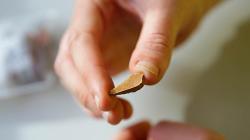 Parramatta – Aboriginal spear barbs are among the more than 400 artefacts recently uncovered by a team of archaeologists at Parramatta Park. Workers have been carefully digging trenches and sifting through layers of earth in the western part of the park known as The Paddocks before further development following the opening of a new playground last month. Archaeologist Jillian Comber said many of the artefacts found during the past two weeks were thousands of years old and included back blades and flaking, which is the remnants of stone from tool making.
Parramatta – Aboriginal spear barbs are among the more than 400 artefacts recently uncovered by a team of archaeologists at Parramatta Park. Workers have been carefully digging trenches and sifting through layers of earth in the western part of the park known as The Paddocks before further development following the opening of a new playground last month. Archaeologist Jillian Comber said many of the artefacts found during the past two weeks were thousands of years old and included back blades and flaking, which is the remnants of stone from tool making.  The park and its surrounds would have been home to the Burramatta clan after which Parramatta is named. It is believed the area might also have been a spot where aboriginal clans came together for trading.
The park and its surrounds would have been home to the Burramatta clan after which Parramatta is named. It is believed the area might also have been a spot where aboriginal clans came together for trading.
http://www.dailytelegraph.com.au/newslocal/parramatta/aboriginal-artefacts-discovered-in-archaeological-dig-at-parramatta-park/story-fngr8huy-1227384848529
ROYAUME UNI – 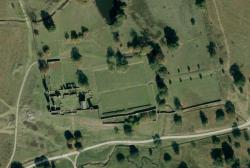 Bradgate Park - Archaeologists are starting a five-year project to reveal the secrets of Bradgate Park . It is not clear yet what lies beneath the well-walked turf of the park, but there is evidence of more than 12,000 years of human occupation, including Roman pottery and coins and, of course, there are the ruins of the childhood home of Lady Jane Grey, Bradgate House, which was completed in about 1520.
Bradgate Park - Archaeologists are starting a five-year project to reveal the secrets of Bradgate Park . It is not clear yet what lies beneath the well-walked turf of the park, but there is evidence of more than 12,000 years of human occupation, including Roman pottery and coins and, of course, there are the ruins of the childhood home of Lady Jane Grey, Bradgate House, which was completed in about 1520.
http://www.leicestermercury.co.uk/Archaeologists-prepare-reveal-secrets-Bradgate/story-26641537-detail/story.html
ITALIE – 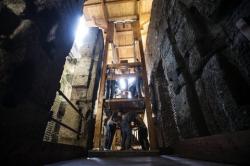
 Rome - The archeological ruins of Rome’s Colosseum may be majestic, but they only give a vague sense of the marvel-inducing pageantry that ancient visitors would have experienced attending a spectacle at the ancient arena inaugurated in 80 A.D.. A bit of that showmanship was glimpsed on Friday when Italian officials presented a model of a complex lift and trap-door system used in ancient times to raise wild animals from their cages onto the arena floor. The model, which visitors to the underground areas of the Colosseum can see, “will help people understand what the Colosseum was,” Francesco Prosperetti, the government official in charge of Rome’s archeological heritage, at a news conference on Friday. Some 28 lifts were used in the arena. The model is based on descriptions in ancient texts, as well as “traces in the walls” in the underground area of the arena where the machines would have been situated, said Heinz Beste, of the German Archeological Institute in Rome, who worked on the design.The lift raises a cage from the bottom of the amphitheater to the floor of the arena 24 feet above, powered by eight men turning a wheel. As the cage rises, a trap door in the floor of the arena dropped so that the animals could emerge.
Rome - The archeological ruins of Rome’s Colosseum may be majestic, but they only give a vague sense of the marvel-inducing pageantry that ancient visitors would have experienced attending a spectacle at the ancient arena inaugurated in 80 A.D.. A bit of that showmanship was glimpsed on Friday when Italian officials presented a model of a complex lift and trap-door system used in ancient times to raise wild animals from their cages onto the arena floor. The model, which visitors to the underground areas of the Colosseum can see, “will help people understand what the Colosseum was,” Francesco Prosperetti, the government official in charge of Rome’s archeological heritage, at a news conference on Friday. Some 28 lifts were used in the arena. The model is based on descriptions in ancient texts, as well as “traces in the walls” in the underground area of the arena where the machines would have been situated, said Heinz Beste, of the German Archeological Institute in Rome, who worked on the design.The lift raises a cage from the bottom of the amphitheater to the floor of the arena 24 feet above, powered by eight men turning a wheel. As the cage rises, a trap door in the floor of the arena dropped so that the animals could emerge.
http://artsbeat.blogs.nytimes.com/2015/06/05/heres-how-ancient-romans-got-wild-animals-onto-the-colosseum-floor/?
MALTE – 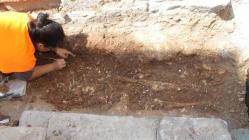 Vittoriosa - Archaeological human remains have been found to the side of St Joseph's Oratory in Vittoriosa, the Superintendence for Cultural Heritage said. It said the remains, a skeleton of an adult individual, were found during excavations for the placing of an electricity cable. The skeleton was found just a few centimeters beneath the road’s surface. The zone where the find was made was part of a cemetery that was linked to the St Lawrence Parish Church. The cemetery was already in use in the 16th century. All evidence pointing to the cemetery had disappeared by the 19th century. However, the skeleton’s find shows that in spite of all the activity that took place on site, parts of the cemetery remained intact. This was also in spite of the war damage suffered by Vittoriosa. The superintendence said it was probable there were many more historic burials in the zone.
Vittoriosa - Archaeological human remains have been found to the side of St Joseph's Oratory in Vittoriosa, the Superintendence for Cultural Heritage said. It said the remains, a skeleton of an adult individual, were found during excavations for the placing of an electricity cable. The skeleton was found just a few centimeters beneath the road’s surface. The zone where the find was made was part of a cemetery that was linked to the St Lawrence Parish Church. The cemetery was already in use in the 16th century. All evidence pointing to the cemetery had disappeared by the 19th century. However, the skeleton’s find shows that in spite of all the activity that took place on site, parts of the cemetery remained intact. This was also in spite of the war damage suffered by Vittoriosa. The superintendence said it was probable there were many more historic burials in the zone.
http://www.timesofmalta.com/articles/view/20150605/local/archaeological-human-remains-found-in-vittoriosa.571223?
ROYAUME UNI –  Bryn Celli Ddu - An ancient tomb on Anglesey will be excavated this summer as part of a two-week long archeology event. The Neolithic passage tomb of Bryn Celli Ddu is one of Wales’s best-known prehistoric monuments. The fortnight-long event starts on June 9 and will culminate in a public open day and celebration of the Summer Solstice from June 19-22. The excavation of the tomb will be led by the Welsh Government’s historic environment service Cadw and Manchester Metropolitan University. It is hoped it will break new ground exploring the landscape’s ‘rock art’- a term used in archaeology to describe the human-made markings discovered in natural stone. “The purpose of the dig is to endeavour to find out more about the people who built the tomb and carved the rock next to it, as well as gather evidence of the tool used to create the rock art in the immediate landscape. “The tool was reputed to have been quartz, which was found in the original excavation by W. H. Hemp in the 1920s around the main Bryn Celli Du mound.”
Bryn Celli Ddu - An ancient tomb on Anglesey will be excavated this summer as part of a two-week long archeology event. The Neolithic passage tomb of Bryn Celli Ddu is one of Wales’s best-known prehistoric monuments. The fortnight-long event starts on June 9 and will culminate in a public open day and celebration of the Summer Solstice from June 19-22. The excavation of the tomb will be led by the Welsh Government’s historic environment service Cadw and Manchester Metropolitan University. It is hoped it will break new ground exploring the landscape’s ‘rock art’- a term used in archaeology to describe the human-made markings discovered in natural stone. “The purpose of the dig is to endeavour to find out more about the people who built the tomb and carved the rock next to it, as well as gather evidence of the tool used to create the rock art in the immediate landscape. “The tool was reputed to have been quartz, which was found in the original excavation by W. H. Hemp in the 1920s around the main Bryn Celli Du mound.”
http://www.dailypost.co.uk/news/north-wales-news/prehistoric-anglesey-tomb-excavated-archeology-9393252?
IRAQ –  - In response to the violent events that have rocked Iraq in recent months, bringing about the destruction of world cultural heritage,the International Council of Museums (ICOM) has presented the press with its Emergency Red List of Iraqi Cultural Objects at Risk, an updated and enriched version of ICOM’s very first emergency Red List on Iraq published in 2003. The threat to cultural objects posed by the conflicts in Iraq and Syria, as demonstrated by the recent intentional acts of destruction, call for an immediate response from the international museum community. The Emergency Red List for Syria, published in September 2013, and the one now being published for Iraq are concrete tools intended to prevent looted objects from being subject to illicit trafficking. The Emergency Red List of Iraqi Cultural Objects at Risk highlights the types of objects which, in demand by the art and antiquities market and protected by legislation, are vulnerable to theft or looting. Individuals and institutions liable to acquire objects originating from Syria or Iraq are requested to demonstrate extreme prudence as regards the provenance and legal documentation of said objects. This practical tool has already proven successful over the years, enabling law enforcement agencies to seize thousands of objects.
- In response to the violent events that have rocked Iraq in recent months, bringing about the destruction of world cultural heritage,the International Council of Museums (ICOM) has presented the press with its Emergency Red List of Iraqi Cultural Objects at Risk, an updated and enriched version of ICOM’s very first emergency Red List on Iraq published in 2003. The threat to cultural objects posed by the conflicts in Iraq and Syria, as demonstrated by the recent intentional acts of destruction, call for an immediate response from the international museum community. The Emergency Red List for Syria, published in September 2013, and the one now being published for Iraq are concrete tools intended to prevent looted objects from being subject to illicit trafficking. The Emergency Red List of Iraqi Cultural Objects at Risk highlights the types of objects which, in demand by the art and antiquities market and protected by legislation, are vulnerable to theft or looting. Individuals and institutions liable to acquire objects originating from Syria or Iraq are requested to demonstrate extreme prudence as regards the provenance and legal documentation of said objects. This practical tool has already proven successful over the years, enabling law enforcement agencies to seize thousands of objects.
http://www.archaeology.wiki/blog/2015/06/04/icom-draws-red-list-iraqi-cultural-objects-risk/
GRECE – 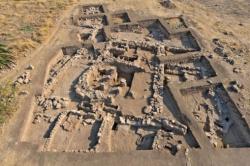 Mitrou - From 2004-2008 excavations and surveys were carried out at the prehistoric site of Mitrou by the 14th Ephorate of Prehistoric and Classical Antiquities (now the Ephorate of Antiquities of Phthiotida and Eurytania) in collaboration with the University of Tennessee under the auspices of the American School of Classical Studies at Athens. Mitrou is a tidal islet in the North Euboean Gulf located off the coast of Tragana, Phthiotida. As many as 57 occupational levels have been uncovered, spanning a period from Early Helladic IIB to the Late Protogeometric period (ca. 2400 – 900 BCE). This long uninterrupted occupation makes Mitrou an ideal site for studying societal changes in prehistoric mainland Greece. This paper deals with social practices in the Middle Helladic through Late Helladic IIIC periods at Mitrou. The focus is on diachronic changes in the construction of walls, entrances, and floors as well as the arrangement and use of space in various buildings. A new typology of rubble wall construction is being proposed that helps clarify developments at the site. As Bourdieu has famously observed, social practices are reflections of a group’s internalized social norms and structures. As such, the study of Mitrou’s social practices provides important information for understanding changes in society, and in particular the transition from the Early Helladic IIB Corridor House civilization to the simpler society of EH III/MH I, societal developments in the course of the Middle Helladic period; and the rise of a visible political elite from the Late Helladic I phase onwards, which established an increasingly elaborate elite architectural vocabulary in order to project its elevated status.
Mitrou - From 2004-2008 excavations and surveys were carried out at the prehistoric site of Mitrou by the 14th Ephorate of Prehistoric and Classical Antiquities (now the Ephorate of Antiquities of Phthiotida and Eurytania) in collaboration with the University of Tennessee under the auspices of the American School of Classical Studies at Athens. Mitrou is a tidal islet in the North Euboean Gulf located off the coast of Tragana, Phthiotida. As many as 57 occupational levels have been uncovered, spanning a period from Early Helladic IIB to the Late Protogeometric period (ca. 2400 – 900 BCE). This long uninterrupted occupation makes Mitrou an ideal site for studying societal changes in prehistoric mainland Greece. This paper deals with social practices in the Middle Helladic through Late Helladic IIIC periods at Mitrou. The focus is on diachronic changes in the construction of walls, entrances, and floors as well as the arrangement and use of space in various buildings. A new typology of rubble wall construction is being proposed that helps clarify developments at the site. As Bourdieu has famously observed, social practices are reflections of a group’s internalized social norms and structures. As such, the study of Mitrou’s social practices provides important information for understanding changes in society, and in particular the transition from the Early Helladic IIB Corridor House civilization to the simpler society of EH III/MH I, societal developments in the course of the Middle Helladic period; and the rise of a visible political elite from the Late Helladic I phase onwards, which established an increasingly elaborate elite architectural vocabulary in order to project its elevated status.
http://www.archaeology.wiki/blog/2015/06/05/corridor-house-civilization-mycenaean-palaces/